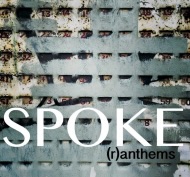
Requisites
The Summer Knows ~ Art Farmer | By Eddie Carter
This past week was particularly rough, and I eagerly looked forward to the weekend. This morning’s album offered for your consideration is The Summer Knows (East Wind EW-8047). It was one of my mom’s favorites, and the music brought back fond memories of when I was younger. This underrated gem is an excellent quartet date by Art Farmer, one of five albums he released in 1977. Art’s exclusively heard on flugelhorn and shares the spotlight with a stellar rhythm section: Cedar Walton on piano, Sam Jones on bass, and Billy Higgins on drums. My copy is the Japanese Stereo release.
Side One starts with the title track, The Summer Knows, by Alan and Marilyn Bergman and Michel Legrand. A gentle piano introduction transitions to Art’s sweet melody and a captivating, touching opening statement with a nostalgic and soothing vibe. Cedar follows with a delicately heartfelt performance. Art’s final enchanting choruses flow smoothly before the ensemble’s theme is softly revisited. Manhã Do Carnaval by Luiz Bonfá, Antônio Maria, and François Llenas springs to life with the trio’s introduction. Art follows them with an infectiously charming melody and opening solo. Cedar carries the festivities into the second reading until Art’s closing statement leads to the theme’s reprise.
Alfie by Burt Bacharach and Hal David starts with a piano introduction that grows into Art’s delicately sensitive theme and opening statement. Cedar’s solo creates a deep emotional resonance that is genuinely moving. Art’s concluding thoughts are hauntingly tender, preceding the closing theme. When I Fall In Love by Victor Young and Edward Heyman gets Side Two underway with Art’s solo introduction ahead of the foursome’s exquisite melody. The leader’s first solo embraces the song’s essence and intimacy. Cedar delivers enchanting beauty in the following reading; then, Art takes over the spotlight again for a short expression of love that dissolves into nothingness.
Ditty by Art Farmer starts with an energetic introduction by Sam and Cedar, setting the stage for the ensemble’s lively melody. Art begins the opening statement with a brisk and confident lead, followed by Cedar’s impressively spirited solo. Billy concludes with a concise yet impactful comment, leading back to the restated theme and climax. The album concludes with a beloved classic, I Should Care, by Axel Stordahl, Paul Weston, and Sammy Cahn. The group’s easygoing groove sets the mood for the introduction and melody. Art commences with a beautifully rendered interpretation, and Sam’s brief yet engaging solo complements it perfectly, leading into the heartfelt closing chorus.
Kiyoshi Itoh and Yasohachi Itoh produced The Summer Knows, with David Baker and Yoshihiro Suzuki behind the dials as the recording engineers. The album boasts exceptional sound quality, capturing an outstanding soundstage that places the musicians perfectly in your listening space with crystal-clear fidelity. For jazz aficionados seeking an ideal album perfect for unwinding after a long day or those only familiar with Art’s work with the Jazztet, I highly recommend The Summer Knows by Art Farmer for your library. It’s a remarkable release no jazz lover should overlook on their next record-shopping adventure!
~ I Should Care, When I Fall In Love – Source: JazzStandards.com
~ Alfie, Manhã Do Carnaval, The Summer Knows – Source: Wikipedia.org
© 2025 by Edward Thomas Carter
More Posts: choice,classic,collectible,collector,history,instrumental,jazz,music,trumpet

Requisites
Generation ~ Dexter Gordon | By Eddie Carter
Dexter Gordon, a tenor saxophonist who has always held a special place in my heart growing up, is the focus of this morning’s spotlight with his album Generation (Prestige P-10069). As a teenager, I was fortunate to witness his live performance at the 1972 Newport Jazz Festival in a fantastic jam session. This 1973 release, his eleventh with Prestige, is a reunion with Freddie Hubbard, who previously collaborated with Dexter on Doin’ Allright and Clubhouse. Freddie plays flugelhorn (tracks: A2, B1) and trumpet (A1, B2) on the album. The rhythm section, consisting of Cedar Walton on piano, Buster Williams on bass, and Billy Higgins on drums, is equally impressive. My copy is the original U.S. Stereo release.
The album opens with the first version of Milestones by Miles Davis, setting the tone with a slightly slower groove for the theme. Dexter’s opening solo is immediately captivating, and then Freddie takes over the spotlight for an inspired improvisation. Cedar follows with a well-crafted statement, and Buster contributes a final shining moment before the theme’s reprise and climax. Scared To Be Alone by André Previn is up next. Dexter and the trio initiate the first chorus of the melody, then are accompanied by Freddie to complete the theme. Dexter’s tender and gentle solo paves the way, and Freddie’s luxuriously elegant flugelhorn conveys deep emotion. Buster’s brief reading before the theme concludes touchingly provides the perfect ending to this beautiful ballad.
We See by Thelonious Monk changes the pace with a lively start to the second side. Billy’s rhythmic introduction sets the stage for the quintet’s medium-tempo melody. Dexter demonstrates his skill and precision in a delightful opening solo, followed by Freddie, whose performance displays a dazzling tone. Cedar shines in a well-crafted statement next, while Buster comfortably strolls into the ensemble’s ending theme. The Group by Dexter Gordon wraps up the session with a lively melody led by the front line. Dexter opens the solos buoyantly; then Freddie takes over with a marvelously executed statement. Cedar moves efficiently and effectively next, with Billy adding a final comment during the closing chorus.
Generation was produced by Ozzie Cadena and recorded by Rudy Van Gelder, whose expertise behind the dials ensures an exceptional soundstage. The record’s sound quality is superb; the instruments are incredibly clear, emerging from your speakers with remarkable fidelity. For tenor sax enthusiasts, this hard-bop album certainly deserves a spot in any jazz library. The next time you’re at your favorite record store, be sure to check out Generation by Dexter Gordon. It’s a hidden gem from one of jazz’s most significant musicians, and despite being lesser known in his discography, acquiring it won’t break the bank!
~ Milestones – Source: JazzStandards.com © 2025 by Edward Thomas CarterMore Posts: choice,classic,collectible,collector,history,instrumental,jazz,music,saxophone

Requisites…
The Real Thing ~ Louis Hayes | By Eddie Carter
This morning’s record from the library comes from the renowned drummer Louis Hayes. He’s recorded eighteen albums as a leader and is known for his work as a sideman with Cannonball Adderley, Horace Silver, Oscar Peterson, and many others. The Real Thing (Muse Records MR 5125) is his third date and second with this group. It was recorded in 1977 and hit the stores the following year. The album features the exceptional talents of Woody Shaw on flugelhorn (track: A2) and trumpet (A1, A3, B1 to B3), Slide Hampton on trombone (B1 to B3), Rene McLean on alto (B2, B3), soprano (A3, B1), and tenor sax (A1), Ronnie Matthews on piano and Stafford James on bass. My copy is the original U.S. Stereo album.
Side One opens with St. Peter’s Walk by Tex Allen. Hayes introduces this scorcher in an energetic exchange with the front line. After the ensemble’s theme, Woody races through the opening solo with extraordinary energy. Ronnie’s electrically charged fingers move like a shot of adrenaline, then Louis soars out of sight in a vigorous workout. Rene is featured in the opening and closing ensemble but does not solo. Nisha by Louis Hayes is a quartet feature featuring Woody on the flugelhorn. Ronnie’s gentle introduction segues to Woody’s delicate melody. Ronnie picks up the pace in a gentle first solo that hits the mark. Woody follows with a charming sincerity that fits like a glove. Stafford sustains the thoughtful mood in the closer, while Louis’s timekeeping holds everything together ahead of the climax.
Loose Suite by Ronnie Matthews is a play on Louis’s first name. The song opens with the drummer’s razor-sharp introduction ahead of an abstract quintet melody. Rene leads off with an adventurous reading. Woody charges into the second solo with lightning-fast intensity. Louis leaves the listener’s ears sizzling with explosive fireworks preceding the reprise and ending. Side Two starts with My Gift To You by Stafford James. Slide comes on board for the sextet’s medium-fast melody. Rene digs deep into the opening statement and then steps aside for Stafford, who walks briskly in the following presentation. Louis stamps his personality on the finale with propulsive power before the sextet’s closing chorus fades into oblivion.
Jack’s Tune, aka Blue Fable, is by Rene’s father, Jackie McLean, and begins with the ensemble’s vigorous melody. Rene ignites the opening solo with a fire-breathing showcase. Ronnie comes behind him with a blazing interpretation, and then Slide follows with an aggressive statement. Louis gets the last word with a brisk workout, leading to the closing chorus and abrupt climax. Marilyn’s House by Tex Allen keeps the high-voltage exhilaration of the earlier tune, with the front line leading a fiery sextet melody. Woody starts the opening statement with joyous determination. Rene comes in next to give an electrifying presentation. Slide provides the exclamation point in a dazzling reading ahead of the restatement of the theme.
Michael Cuscuna produced The Real Thing, and the recording engineer was Chuck Irwin. The sound quality is not just good, but an enjoyable sit-down and listening experience with a wide soundstage that’s sure to please the most discriminating jazz fan. This is the only studio album the group made together. Still, they also recorded a 1977 live album, The Woody Shaw Concert Ensemble Live at The Berliner Jazztage. At the end of his liner notes, noted jazz journalist Bob Blumenthal states, “Louis Hayes no longer leads this band with Woody Shaw, but it left its mark during 1976 and 1977, and the music remains real.”
Despite the group’s short tenure, the impact of their music is undeniable. The Real Thing by Louis Hayes is one of the jewels of his discography that I’m sure will leave a lasting impression on the listener. For any fan seeking a solid hard-bop album to unwind with after a long day or evening, I invite you to check out this first-rate release on your next record-shopping trip. It’s a perfect starting point to get acquainted with one of the quintessential jazz drummers and a pleasure from start to finish!
~ The Woody Shaw Concert Ensemble Live at The Berliner Jazztage (Muse Records MR 5139) – Source: Discogs.com
~ The Horace Silver Quintet, The Oscar Peterson Trio, The Cannonball Adderley Quintet and Sextet – Source: Album liner notes by Bob Blumenthal.
© 2025 by Edward Thomas Carter
For the serious collector of jazz… #Jazz #Classic #Collectible #Music #Notorious
More Posts: choice,classic,collectible,collector,drums,history,instrumental,jazz,music

Jazz Poems
LADY SINGS THE BLUES
Satin luscious, amber Beauty ceter-stage;garden in her hair. If flowers could sing
they’d sound like this. That legendary scene:
the lady unpetals her song, the only light
in a room of smoke, nightclub tinkering
with lovers in the dark, cigarette flares,
gin & tonic. This is where the heartache
blooms. Forgot the holes
zippered along her arms. Forget the booze.
Center-stage, satin-tongue dispels a note.
Amber amaryllis, blue chanteuse, Amen.
If flowers could sing they’d sound like this.
* * *This should be Harlem, but it’s not.
It’s Diana Ross with no Supremes.
Fox Theater, Nineteen Seventy-something.
Ma and me; lovers crowded in the dark.
The only light breaks on the movie-screen.
I’m a boy, but old enough to know Heartache.
We watch her rise and wither
like a burnt-out cliche. You know the story:
Brutal lush. Jail-bird. Scag queen.
In the asylum scene, the actresses’s eyes
are bruised; latticed with blood, but not quite sad
enough. She’s the star so her beauty persists.
Not like Billie fucked-up satin, hair museless,
heart ruined by the end.
* * * The houselights wake and nobody’s blue but Ma.Billie didn’t sound like that, she says
as we walk hand in hand to the street.
Nineteen Seventy-something,
My lady hums, Good Morning Heartache,
My father’s in a distant place.
TERRANCE HAYES
from Jazz Poems ~ Selected and Edited by Kevin Young
More Posts: book,classic,collectible,history,jazz,library,poet

Daily Dose Of Jazz…
Justin Wood was born on November 18, 1975 in rural Northern Maine and began playing saxophone in fifth grade growing up. During high school, he co-led a jazz trio with trombonist Philip Yaeger and brother Tyler on piano, and played gigs ranging from local restaurants to agricultural conventions.
After attending Harvard University, Justin moved to New York City in 1999 and worked as a union organizer and explored the city’s music scene. He began performing in the city in 2001, and has performed with diverse musical groups in venues including Birdland, the Brooklyn Academy of Music, NJ Performing Arts Center, the Knitting Factory, and the Garage.
Rather than pursuing a conservatory education, he has learned from and been inspired by his peers. Through private lessons with top creative musicians such as Bill McHenry and Michel Gentile he has developed his own voice.
Currently, alto saxophonist and flautist Justin Wood continues to participate in diverse musical projects. He co-leads Spoke, an eclectic quartet with trombonist Andy Hunter, bassist Dan Loomis, and drummer Danny Fischer.
More Posts: bandleader,flute,history,instrumental,jazz,music,saxophone



